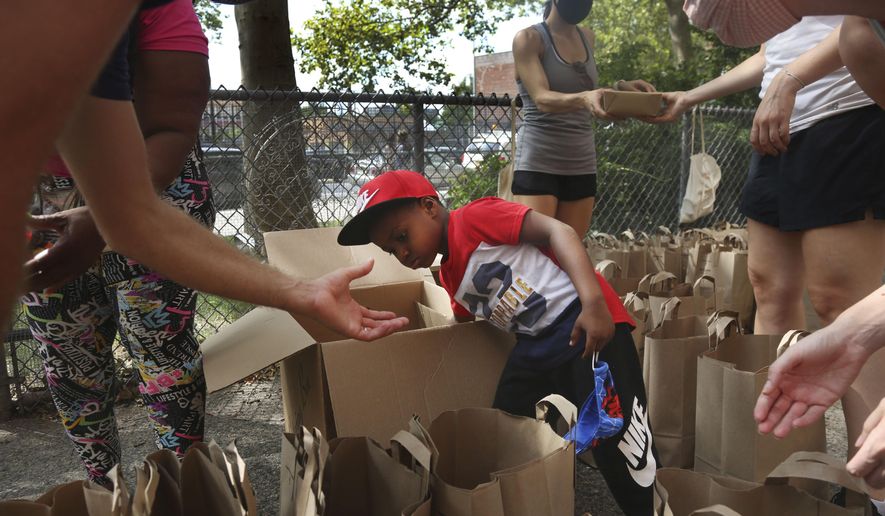Anti-hunger advocates warn that an unprecedented food crisis awaits the U.S. this winter because COVID-19 has depleted pantries and joblessness remains high entering the colder months.
Most heartbreaking, observers say, is that the nation’s children had faced historically low levels of food anxiety before the pandemic.
“Before COVID hit, we were on a pathway to end childhood hunger,” Lisa Davis, senior vice president of the D.C.-based nonprofit No Kid Hungry, said last week in phone briefing. “All of which was undone in just a matter of months.”
Nearly 26 million American adults don’t have enough food to eat over the course of a week, according to U.S. Census Bureau data. The U.S. Department of Agriculture estimates that another 11 million live in “food insecure” households, or homes unable to provide enough sustenance for an active, healthy life.
Food insecurity had hit a nearly 20-year low, but the pandemic has upended those numbers. Schools closed, cutting off many children’s access to food.
Some dairy producers poured milk down drains due to supply-side anxieties in the early days of the pandemic, and food pantries’ shelves were emptied.
“If you want to see a hungry kid, come in on a Monday and eat what they didn’t get over the weekend,” said Gay Anderson, child nutrition director at Brandon Valley School District in Brandon, South Dakota. “Kids are scared when they’re hungry.”
According to a fall survey, regions such as Mississippi, where 22.6% of kids are projected to go without enough food, and Wayne County, Michigan, (29.3%) continue to top other U.S. locales for food insecurity.
But the largest increase has come in unlikely places, such as Massachusetts, in part due to a perfect storm of joblessness, strained food banks and closed schools brought on by the pandemic.
On Thursday, Sen. Elizabeth Warren, Massachusetts Democrat, tweeted that a food bank in Battle Creek, Michigan, has gone from serving 80 families a week to more than 600. Ms. Warren has called for Congress to pass an extension of Supplemental Nutrition Assistance Program (SNAP) benefits, commonly known as food stamps.
Food advocates call for an across-the-board approach to solving the crisis, from increasing SNAP benefits in a hoped-for stimulus bill to greater volunteering and giving to charitable food banks.
Last week, the Philadelphia food bank Philabundance said cyber thieves had stolen more than $900,000 in a phishing scam this summer. Other food banks have reported record demand. In New York City alone, an estimated 1.5 million residents can’t afford food, a 38% increase over pre-COVID-19 numbers, according to City Harvest.
Last Monday, Virginia Gov. Ralph Northam, a Democrat, visited a food bank in Southwest Virginia to raise attention to the need for volunteers and donations.
“Cold weather and darkness are two things all people have to worry about,” said Michelle Rogers, a parent and community advocate in Maryland. “Hunger is more expansive than just food. It was emotionally traumatic for me when I lost my job, when I looked into my account and realized that I didn’t have enough able to provide. It made me feel ashamed and powerless.”
Genevieve Mougey, director of the Office for Social Concerns of the Archdiocese of Washington, said the number of parishes operating food pantry programs has nearly doubled, from 37 in February to more than 70 today.
“After March 2020, we determined very quickly that there would be an increase in need and support for families and individuals due to the economic reality and impact of COVID,” Ms. Mougey told The Washington Times.
An archdiocesan grant also has been developed to award up to $5,000 to a school or parish to help families requesting food assistance.
• Christopher Vondracek can be reached at cvondracek@washingtontimes.com.




Please read our comment policy before commenting.